Restorative dentistry encompasses a variety of dental procedures and treatments designed to improve oral health and transform your smile. The primary objective of this dental specialty is the diagnosis, prevention, and treatment of dental issues that affect the function, appearance, or overall well-being of an individual’s teeth and supporting structures.
By employing various benefits and techniques, restorative dentistry aims to restore damaged or missing teeth, thereby enhancing one’s ability to speak, chew food efficiently, maintain healthy teeth alignment, and achieve optimal oral health.
The field of restorative dentistry combines both art and science in its approach to providing comprehensive care for patients with diverse oral health needs. Through careful assessment of each patient’s unique situation, dental professionals develop customized treatment plans aimed at addressing specific concerns while also promoting long-term success in maintaining functional and aesthetically pleasing results.
Advancements in modern dentistry have dramatically expanded the range of available solutions for those seeking effective ways to address their oral health concerns through restorative means. As more people realize how significantly a healthy smile can impact their overall quality of life – both physically and emotionally – the demand for skilled practitioners specializing in these transformative services continues to grow exponentially worldwide.
## Types Of Restorative Dentistry
The field of restorative dentistry encompasses a variety of dental treatments aimed at repairing or replacing damaged teeth in order to restore both function and aesthetics. At Prairie Star Dental, located in Round Rock, TX, Dr. Rawcliffe and his team are committed to providing the highest quality care for patients requiring these services.
In this section, several common types of restorative dentistry procedures will be discussed. One type of restorative dentistry procedure is dental fillings, which involves the removal of decay from a tooth followed by filling the cavity with a biocompatible material such as composite resin or amalgam. This serves to protect the remaining healthy tooth structure while also restoring its strength and functionality.
Another popular option is dental crowns, often recommended when a significant amount of tooth structure has been lost due to damage or decay. These custom-made caps are designed to completely cover the compromised tooth, effectively rebuilding it while simultaneously improving its appearance.
Other prevalent types include root canal therapy, dental implants, bridges, and dentures – all serving distinct purposes within the realm of restorative dentistry. Root canal therapy targets infected pulp tissue inside a tooth and preserves the natural structure; whereas dental implants replace missing teeth by inserting an artificial titanium root into the jawbone that supports prosthetic teeth on top. Bridges serve as another solution for missing teeth by utilizing neighboring healthy teeth as anchors for false replacements. Dentures provide support for individuals who have experienced the extensive loss of their natural teeth through removable full or partial sets crafted specifically for each patient’s unique needs.
The subsequent section will delve into further detail regarding the benefits associated with these various forms of treatment provided by professionals like those found at Dr.Rawcliffe’s practice in Round Rock, TX.
Benefits Of Restorative Dentistry
As an essential aspect of oral health care, Dr. Rawcliffe is an expert in restoring damaged or missing teeth using various advanced techniques, ultimately transforming patients’ smiles.
One significant benefit of restorative dentistry is the improvement it brings to an individual’s overall oral health. A professional can identify and treat various dental concerns like tooth decay, gum disease, and misaligned bites, which may cause pain or discomfort if left untreated.

Additionally, restorative dentistry enhances the appearance of one’s smile by addressing aesthetic issues such as gaps between teeth or discolored fillings. In turn, this can lead to increased self-confidence, allowing people to feel more comfortable with their appearance during social interactions.
Another advantage offered by restorative dentistry is its ability to restore function within the mouth. Missing or damaged teeth may hinder basic activities like eating or speaking properly; however, DDS experts utilize innovative solutions like dental implants and crowns to replace these compromised teeth effectively. By doing so, they not only improve a person’s quality of life but also prevent further damage from occurring due to weakened jawbones or shifting teeth positions.
With these benefits in mind, it becomes evident how crucial restorative dentistry services are in maintaining optimal oral health for millions of people worldwide. The following section delves into various techniques employed in this field that help achieve remarkable results for those seeking comprehensive dental care solutions.
Techniques Used In Restorative Dentistry
Having explored the advantages that restorative dentistry can offer, it is essential to delve into the various techniques employed by dental professionals in this field. The primary goal of these methods is to restore the function, integrity, and appearance of a patient’s teeth so they may enjoy a healthy and bright smile once again.
One widely used technique for repairing damaged or decayed teeth is dental fillings. A filling material, typically made from amalgam or composite resin, is applied to the affected tooth after removing any decayed portions.
Another option available for missing teeth is dental implants. These are surgically implanted titanium posts that replace natural tooth roots and provide support for crowns or bridges.
Furthermore, dental crowns are also an effective means of restoring severely damaged teeth that cannot be repaired with simple fillings. Crowns are custom-made caps shaped like a tooth that cover and protect the entire visible structure above the gum line.
In addition to these treatments, there exist other advanced options such as veneers – thin shells of porcelain bonded onto the front surfaces of teeth; inlays and onlays – indirect fillings crafted outside of the mouth before being cemented onto a prepared cavity; root canal therapy – removal of infected pulp inside a tooth followed by sealing and restoration with crown placement; removable partial dentures – prosthetic devices consisting artificial teeth attached to metal frameworks designed to fit snugly around existing natural structures; complete dentures (full arch) – replacement appliances for patients who have lost all their upper or lower teeth due to extraction or injury.
As different individuals face unique situations regarding their oral health needs, understanding when restorative dentistry becomes necessary entails consultation with skilled professionals able to diagnose issues accurately based on comprehensive evaluations involving clinical assessments, dental imaging, and patient histories.
When Is Restorative Dentistry Necessary?
Restorative dentistry becomes necessary when dental health issues, such as tooth decay, gum disease, or injury have resulted in damage to the teeth and surrounding structures. The extent of this damage often determines the type of restorative treatment required.
For instance, minor cavities may be treated with simple fillings, while more extensive decay or broken teeth may require crowns or bridges to restore functionality and aesthetics.
Various factors contribute to the need for restorative dentistry. These include poor oral hygiene practices leading to plaque accumulation and subsequent tooth decay; genetic predisposition affecting enamel strength and susceptibility to periodontal diseases; lifestyle choices such as tobacco use or excessive consumption of acidic foods and beverages that erode tooth surfaces over time; as well as accidents resulting in trauma to the mouth.
Additionally, age-related changes in oral tissues and bone density can also necessitate restorative treatments to maintain optimal dental health.
In order to determine whether a patient requires restorative intervention, an individualized assessment by a dental professional is crucial. This evaluation will typically involve a comprehensive examination of the patient’s medical history, clinical findings during intra-oral examinations, radiographic images (X-rays), diagnostic impressions, and other relevant tests.
Based on these findings, an appropriate treatment plan can be developed which addresses both functional and aesthetic concerns while maintaining long-term success rates for each procedure utilized. With this information at hand, patients are better equipped to make informed decisions regarding their dental care needs moving forward into the next phase: preparing for a restorative dentistry procedure.
Preparing For A Restorative Dentistry Procedure
Alluding to a renowned saying, ‘Prevention is better than cure,’ it becomes essential for patients to be well-prepared before undergoing any restorative dentistry procedure. This preparation not only ensures the success of the treatment but also contributes significantly to achieving optimal results and avoiding potential complications.
In this context, understanding the various aspects involved in preparing for a restorative dentistry procedure holds paramount importance.
One crucial aspect that dental specialists emphasize is having comprehensive knowledge about the specific restorative technique recommended by the dentist. Patients should thoroughly discuss with their dental care providers regarding the chosen method’s benefits, risks, and expected outcomes.
Furthermore, they must understand all pre-operative instructions provided by the dentist carefully. These may include maintaining oral hygiene through regular flossing and brushing, abstaining from certain medications or habits such as smoking or alcohol consumption, and adhering strictly to prescribed dietary restrictions if any.

Another fundamental element during the preparatory phase involves scheduling appropriate appointments with one’s dental professional, ensuring ample time for consultations, assessments, and follow-ups. Moreover, discussing financial arrangements beforehand can help avoid unnecessary stress during recovery.
Such meticulous attention to detail paves the way for the successful completion of restorative procedures while minimizing the discomfort and anxiety associated with these treatments.
As every patient embarks on this transformative journey towards an improved smile, awareness plays a vital role in navigating through each stage seamlessly – including what follows next: The recovery process after restorative dentistry.
Conclusion
In conclusion, restorative dentistry bears significant potential for individuals seeking to enhance their oral health and appearance.
With its diverse array of techniques and benefits, this field has demonstrated itself as a powerful tool in addressing various dental concerns whilst simultaneously improving one’s quality of life.
By doing so, the metamorphosis of one’s smile shall undoubtedly bear testament to the transformative power of modern restorative dentistry – an apt reflection of progress within the realm of dental care.
Don’t let damaged or missing teeth hold you back any longer! Take the first step towards a healthier, more confident smile today by calling Prairie Star Dental at (512) 643-6104. Our expert team is ready to provide the best restorative dental services to meet your unique needs. Don’t wait – your stunning new smile is just a phone call away!

